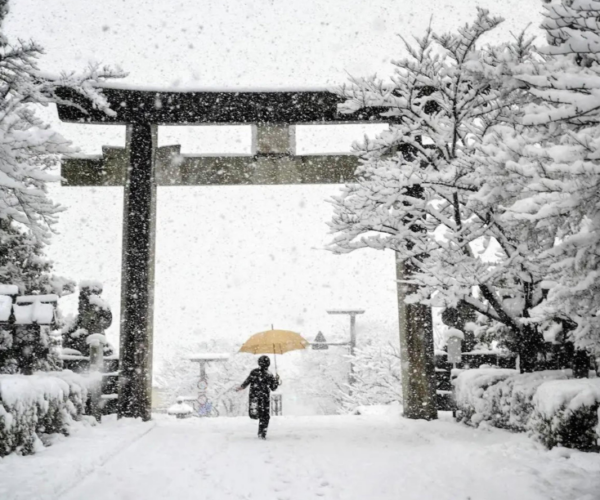An Introduction to the Wacky World of Japanese Arcades
This article was originally published in the February 2023 issue of CONNECT.
Knox Yoder (Saga)
One of the things about Japanese culture that seems to have captured the attention of Japan enthusiasts worldwide is the Japanese arcade. Outside of the rare, niche retro arcade or hipster barcade, arcades are something like the rest of the world left in the ‘90s. In Japan, however, arcades (known locally as “game centers”) are everywhere.
Your first trip to an arcade in Japan can be a bit overwhelming. Most have multiple floors filled with bright lights, loud music, colorful merchandise, and an abundance of people who seem to know exactly what they’re doing. And then there’s you, the confused foreigner just looking for a way to spend their hard-earned yen. Where do you even start?
Fear not, dear reader, as I was once as lost as you. While I still can’t tell you how to play everything you’ll find at an arcade, I’ll happily introduce you to everything you can do at one and give you some pointers on how to get started.
UFO Catchers
Perhaps one of the things in Japanese arcades that foreigners will be most familiar with is the UFO catcher. Known elsewhere as a crane game, claw machine, or skill crane, UFO catchers were made popular in Japan during the 1980s, with Sega’s specific crane game titled UFO Catcher being so popular that the term became associated with all crane games in the country.
Usually costing ¥100 per play, UFO catchers have a variety of prizes and goodies inside of them, ranging from plush toys of mascots such as Cinnamoroll, anime figures from series such as One Piece and Jujutsu Kaisen, and even snacks and drinks you could find at a convenience store such as Pocky and Monster Energy.
There are three or four types of UFO catchers that you will commonly see at arcades. The most simple to understand (and win) are those that have three pronged claws and feature lighter prizes such as plushies and keychains. These are fairly straightforward and require an equal amount of skill and luck. Other games, such as those with figures, require one to not pick up the figure with the claw but instead move its position until it falls into the prize area. These are a bit more difficult and require much more skill that this journalist does not possess. The best advice I could give you with these kinds of games is to only play for fun and always expect to lose. Know when to step away from a machine so as to not spend thousands of yen on a toy you can find for ¥500 next week at Book Off (and potentially not even win).
A few other timing-based types machines (such as string cutters or “push the thing through the hole” type games) also make up this portion of the arcade. While some claim to be masters at these, I’ve never actually seen anyone win anything, so play at your own risk.
Gashapon
Ah, gashapon. The original “pay money for something random” game that inspired countless modern video games designed to take both your time and your money (looking at you, Genshin Impact). These are incredibly straightforward: you find a machine with something on it that looks interesting to you, put in ¥100-500, and get a random little knick-knack to stick on your shelf when you get home.
There are gashapon toys for literally anything you could ever think of: popular anime and video games, mini household objects, cute animals, and more. Some are even incredibly weird, such as plush cigarettes, and will make you think, “Who would buy this?” Me, that’s who. And with enough time and patience, you too will find a gashapon toy that you never even knew you wanted before walking up to the machine.
Rhythm Games
If you come from a certain subsect of the otaku community, rhythm games are likely a huge part of your life. From Dance Dance Revolution to Hatsune Miku: Project DIVA, Japanese-developed rhythm games have taken the international market by storm. Unsurprisingly, full arcade cabinet versions of these games are one of the main draws in most Japanese game centers.
Almost everyone has played a rhythm game before. While each game has its own unique spin, the formula is largely the same: hit certain prompts in time with the beat of a song. Japan has a variety of different rhythm games, from full-body dancing games (think DDR or the shuffle-focused DANCERUSH STARDOM) to games that are more focused on hand-eye coordination (Hatsune Miku or maimai). Everyone has their favorites, with mine being the more down-to-earth Taiko no Tatsujin drumming game.
While anyone can enjoy a rhythm game at their own pace, these games bring out diehard fans, so be prepared to struggle with a fairly simple song and then watch someone play something 40 times more difficult with flawless perfection. Practice makes perfect, after all. The important thing to remember with these games is to ease yourself into them and have fun. Unlike UFO catchers, there’s no prize to be won with these games other than a high score, so remember to not take them too seriously.
Card Games
Perhaps the most difficult games to understand from a foreign perspective, card-based arcade games are incredibly popular in Japan. Usually placed on a higher floor of a game center, card games are usually based on popular anime or video game series such as Dragon Ball, Fate, Love Live, or Sword Art Online. While you could play any of these games without any prior knowledge, in order to get the full experience, a little preparation is required.
You usually will need to buy an IC card that works with the specific game you want to play in order to save your experience from game to game. Next, you’ll need to be able to understand how to play each game, which can range from fairly simple to fairly complicated. Finally, you’ll need to get some actual, physical cards which can be used to summon characters in each game. You can get these cards at random by playing a few rounds of each game or by seeking out specific cards at hobby shops across Japan.
These games are what many otaku will be most excited to try out at Japanese game centers. However, players beware, as these games are designed to be addictive, random, and take up as much of your money as possible. While they start with a simple ¥100 investment, it doesn’t take long for that ¥100 to become ¥5,000. Have fun with these games, but not too much fun.
Purikura
What draws most Japanese girls to game centers isn’t cute plush prizes from a UFO catcher or high-stress rhythm games but rather the brightly colored purikura photo booths. Short for the katakana pronunciation of “print club,” purikura have become incredibly popular all over Japan.
Inside a purikura booth, groups will take a few pictures in different (usually very cute) poses. Then, you’re directly to two touchscreens where you can add virtual makeup, stickers, phrases, and other “touch-ups” to your pictures. While it may seem corny at first, going to a purikura group with friends is a lot of fun, whether you’re actually trying to create cute photos or are simply messing around with friends.
At the end of the experience, groups will usually get two physical printouts of two of their photos and are given access to digital versions of the rest of them. Usually only costing a few hundred yen per photo session, purikura is an easy and fun way to bond with friends no matter your gender identity.
Knox Yoder (they/them) is a first-year JET living and working in Ureshino, Saga. They have too many hobbies, including but not limited to binging horror movies, playing new and old video games, reading manga, and nerding out over My Chemical Romance. They spend too much money on travels across Japan.









